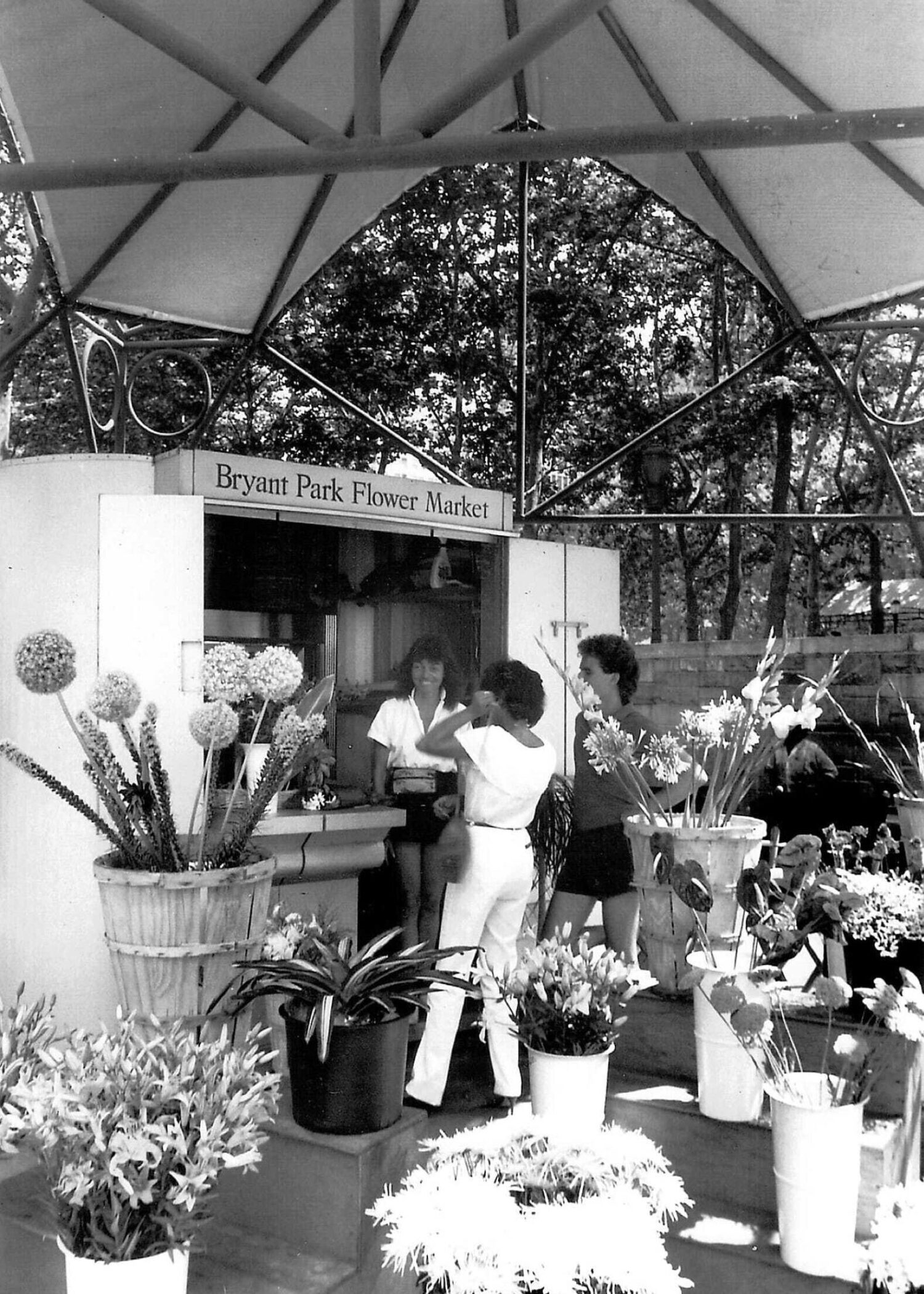Bryant Park Project
Back to Architecture & Installations

A coordinated group of activations and amenities—bookmarket, flower market, cafes, relandscaping—to rescue 1980s Bryant Park, the landmark open space then overrun by aggressive drug dealers.
This seminal project, developed for The Parks Council in the early 1980s by James Sanders and Roy Strickland, was designed to revive Bryant Park, the landmark open space behind the New York Public Library that had become severely under-used due to aggressive drug dealers blocking its entrances and walkways.
To attract the public back into the park, Sanders and Strickland introduced a coordinated group of activations and amenities: an open-air bookmarket operated by Barnes & Noble and the Strand, a flower market, and two cafes, along with landscape improvements and the restoration of the Lowell Fountain—each element relatively modest in scale, but collectively achieving a dramatic positive effect on the historic five-acre space.
Editorial Board, New York Times
Susan Silverberg, MIT
#Interventions and Activations

The project activations all shared the same design approach (above and below, left). Sculpturally shaped aluminum kiosks provided storage for displays and tables, brought out by day and locked safely away at night. The kiosks sat beneath bright canvas-and-metal canopy structures, which not only sheltered the activations’ displays but, crucially, made them visible and beckoning from outside the park, drawing in passersby from the surrounding streets.


The activations’ operators provided daily, low-key surveillance of their immediate surroundings—much as shopkeepers provide, in Jane Jacobs’ phrase, “eyes on the street”—and with much the same result: illegitimate activities almost instantly disappeared or moved deep into the park, where they did not disturb the general public. The steel-and-fabric canopies, meanwhile, helped to define the vending areas, providing a civic scale and spirit that made their quasi-commercial activity feel appropriate in a public park.


Because its installations were coordinated in their design, the project could be implemented incrementally, allowing the first elements—including the bookmarket, a café, and extensive flower planting (above, left and right)—to be put in place within seven months of the start of the effort, then expanded over time by additional elements. Intended initially as a short-term “emergency” intervention, the project remained in operation for much of the decade, setting the stage for later, larger-scale efforts to transform the park.